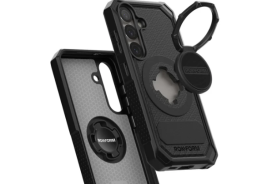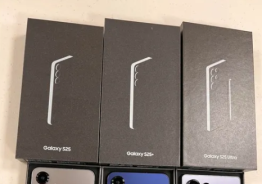HTC and Verizon are slated to hold a press event on Nov. 13 and speculations are rife that they would be announcing the launch of the Droid DNA (also known as HTC DLX). Samsung recently launched its Galaxy Note 2 phablet in October, which has already notched up sales figures of 3 million in a little over a month.
HTC has not disclosed any details of the Droid DNA and all the information available has been garnered through rumors and leaks.
The 5-inch Droid DNA from HTC is believed to be the international variant of the HTC J Butterfly, which the Taiwanese company launched a while ago for only the Japanese market. With the consumer market indicating that bigger is better, the Droid DNA is expected to throw the gauntlet to Samsung's immensely popular Galaxy Note 2, a follow-up to the Galaxy Note, and will attempt to establish a foothold in the not-so-crowded phablet market.
Here's a look at the how the Galaxy Note 2 and the Droid DNA measure up against each other.
Processor
Per leaked specifications, the HTC Droid DNA has a 1.5GHz Qualcomm Snapdragon quad-core processor, whereas a 1.6GHz Exynos quad-core processor powers the Galaxy Note 2.
Display
The Galaxy Note 2 features a huge 5.5-inch Super AMOLED display with 1280 x 720 pixels resolution and 267 pixels per inch (ppi). On the other hand, leaks indicate that the Droid DNA will sport a 5-inch HD display with a mammoth 1080p. The Droid DNA edges out the Galaxy Note 2 with ease with its 440 pixels per inch (ppi) density vis-à-vis the Note 2's 267 ppi.
Dimensions and weight
Samsung's Galaxy Note 2 measures 5.95 x 3.17 x 0.37 inches and weighs 6.46 ounces. The size and weight details of the Droid DNA are not yet known. However, since the device is expected to be an international version of the HTC J Butterfly, it could have the same dimensions of 5.62 x 2.79 x 0.35 inch and weigh 4.93 ounces. If the speculations bear fruition, then the HTC offering would be both lighter and thinner than the Galaxy Note 2.
Storage And Memory
Galaxy Note 2 offers 16/32/64GB of on-board storage which can be expanded to an additional 64GB using a microSD card. Per rumors, the HTC Droid DNA will offer only 16GB of internal storage. It is not known whether the Droid DNA will have expandable memory. However, considering that the HT J Butterfly does (32GB via a microSD) the alleged variant may also support the same.
The Galaxy Note 2 has 2GB of RAM and leaks indicate that the Droid DNA too will have the same capacity.
Camera
The Galaxy Note 2 sports an 8-megapixel rear-facing camera and a 1.9-megapixel front-facing camera. Rumors are divided over the Droid DNA's front-facing snapper with some rumors indicating 8 megapixels and others suggesting that the camera will be 12 megapixels. The HTC offering will also offer a 2-megapixel front-facing camera.
Operating System And Battery
The Galaxy Note 2 comes pre-loaded with Android 4.1 Jelly Bean, and the Droid DNA is also expected run on the same software.
The Galaxy Note 2 includes a powerful 3100mAh battery, which offers users 16 hours of talk time and 890 hours of standby time on 3G network. By comparison, the HTC Droid DNA is rumored to include a smaller 2500mAh battery which will be slightly bigger than the J Butterfly's 2020mAh one. The talk time and standby time of the device has not been disclosed.
Availability
The Galaxy Note 2 hit shelves in October and the 16GB version costs $299.99 on a two-year contract on most U.S. carriers. The unlocked version will set users back by $600. Rumors and leaks suggest that the HTC Droid DNA will be available in mid-December for either $199 or $249 on a two-year contract. The unlocked version of the device will reportedly cost $599. The
With both the Android-powered devices packing a mean punch, it remains to be seen which phablet will conquer the consumer market in the long term.
© Copyright 2025 Mobile & Apps, All rights reserved. Do not reproduce without permission.












